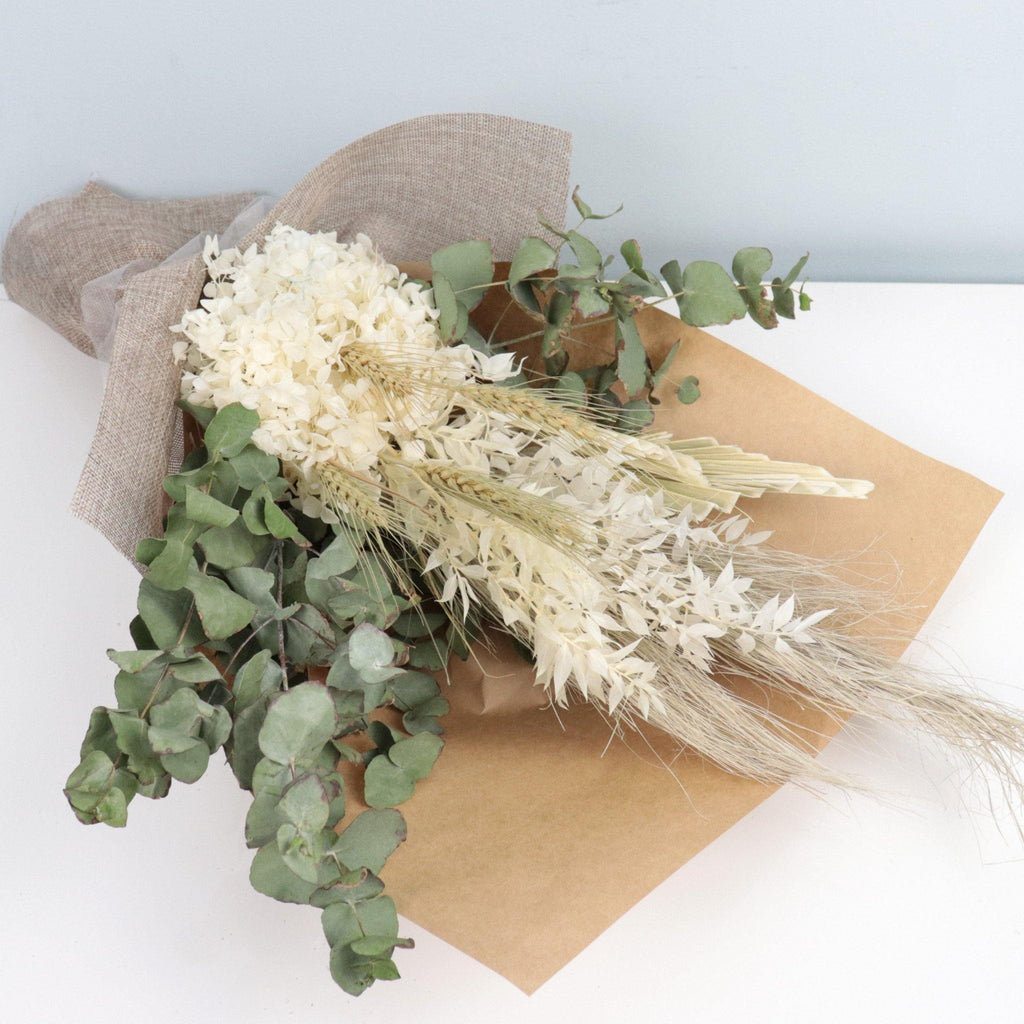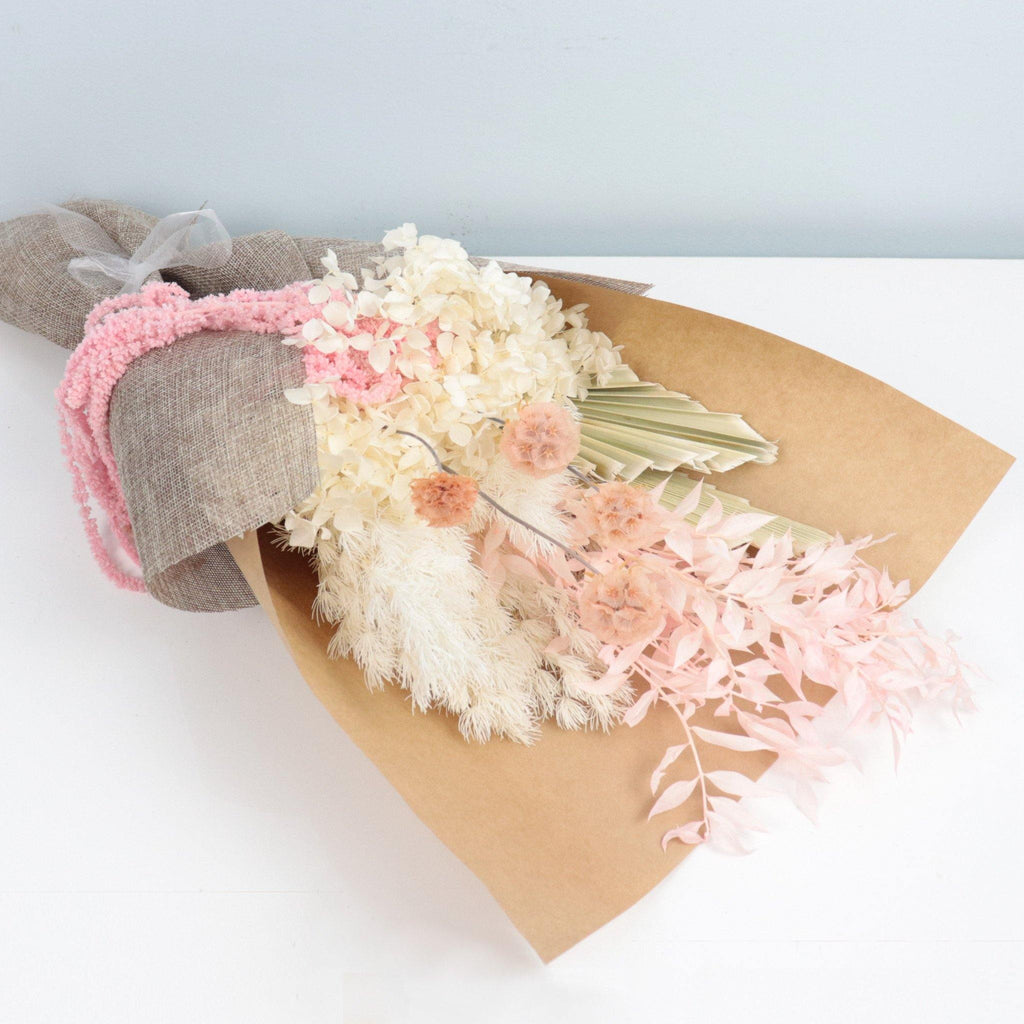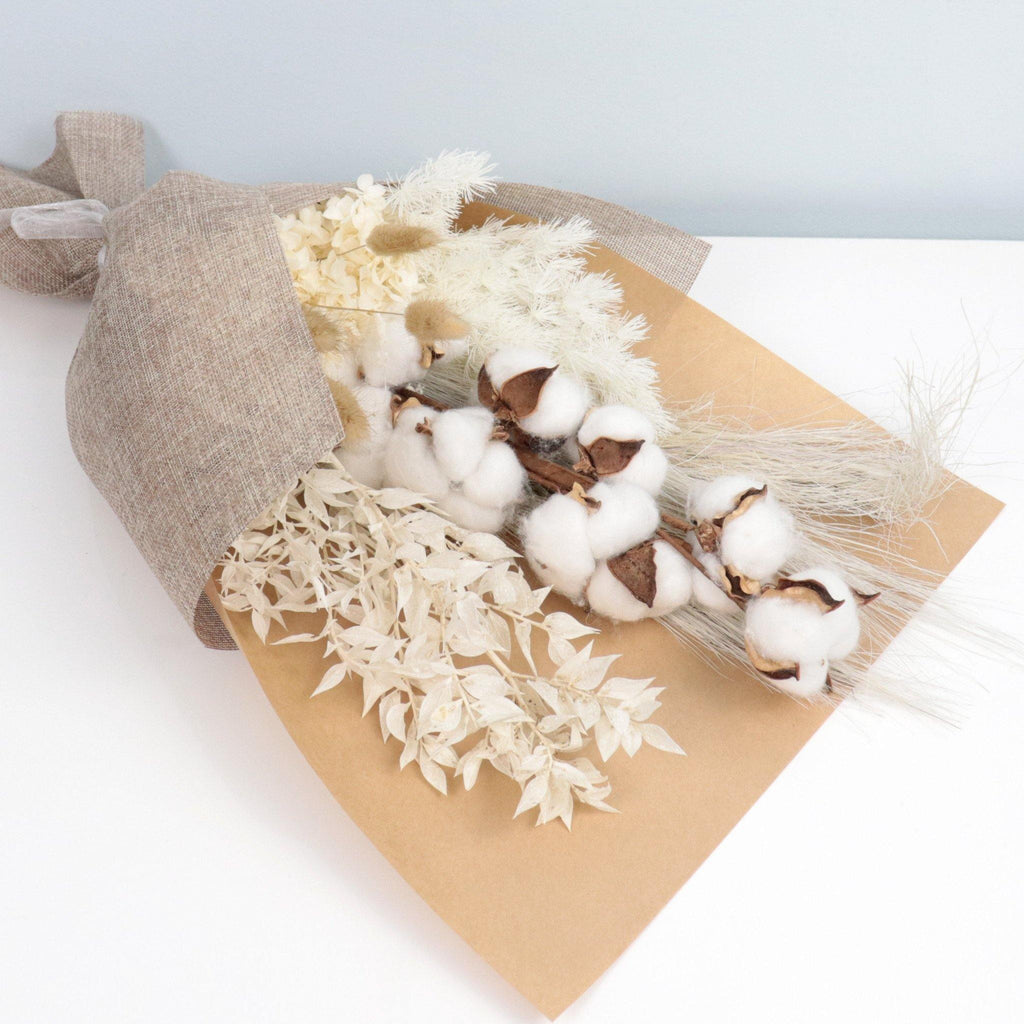The Lotus is one of nature’s most inspiring plant creations. The flower is revered as a divine bloom and significant to both Hinduism and Buddhism. The plants are harvested for their edible seeds and at Flowers Across Australia, we love the dry lotus pods for their bold, sculptural shape that makes them the perfect ingredient for our dried floral arrangements.
Our dried seed pods partner really well with lush green gum leaves or Emu Feather Fern for example, and their earthy brown tones and striking shape will add a touch of boldness to any dried flower arrangement. Have a look at our flower bar for individual lotus seed pods or get the whole kit. Our Lotus Dreaming DIY Kit is trending right now.
To us, the Lotus is a real eye-catcher, regardless of whether it’s a fresh bloom or a dried seed pod. But how does the lotus bud morph from this graceful queen a flower into the sculptural, rather large, dried lotus pod that looks a bit like an inverted tagine dish or the spout of a watering can? Where did the lotus come from? What can we do with its edible parts? What’s its meaning? How can we best display and care for dried lotus pods?
Let’s find out together! Curiosity got the better of us and we investigated a whole lot of facts around this fascinating flower. So read on and come on a journey of discovery with us. In no particular order:
Did you know:
Lotus plants are the masters of transformation
The lotus plant has hands down one of the most fascinating life cycles. Starting as a seed in a preferably muddy bottom of a pond or tranquil river bed, plants can grow up to 2 meters in height with impressive, large foliage. Lotus flowers will delight right through summer and into early autumn. Not only that, but once in bloom, the lotus transforms itself and goes through a process of rebirth daily. The flowering plant, with its roots anchored in the mud, submerges every night into the water, only to reappear the next morning, fresh as a daisy.

The Lotus holds a special place in symbolism and religion
In many cultures, the Lotus is known as the Flower of Life and is considered to be sacred. This is especially true for Asian cultures where it is often depicted alongside the divine and also stands for purity in body, speech, and mind, enlightenment, and self-generation. China, Japan, and Korea have entire festivals dedicated to the Lotus.
In Buddhism, it’s arguably the most important flower. Legend has it that Buddha’s first steps made lotus flowers bloom wherever he stepped. In Hinduism, divinities and deities are often depicted sitting on a lotus throne. The flower bud’s unfolding petals signify the expansion of the soul. It symbolises what is divine or immortal in humanity and the realisation of inner potential.

Lotus flowers have survived the Ice Age
Talk about toughing it out! It is believed that this aquatic plant first graced the earth’s waters millions of years ago. Its native distribution is quite wide and diverse, ranging from central India to the southern Himalayas (up to 1,400 meters altitude) and further to East Asia and parts of Russia, all the way to the Caspian Sea. Today, you can find lotus just about anywhere in the world and in a variety of climates too.
Lotus seeds don’t give up easily either!
You thought the Ice Age was tough? Spare a thought for the lotus seeds. The ones that drop to the bottom of a pond and aren’t eaten by wildlife before they can germinate, can remain dormant for a very long time. Up to 1,300 years to be exact. That is the oldest recorded lotus germination, from seeds that were recovered from a dried-out lake in China. No wonder in Chinese culture, the lotus symbolizes longevity.

Dried lotus pods are totally on-trend
Dried blooms and grasses have been the darlings of florists, event planners, and interior designers for some time now and it doesn’t seem this trend is slowing down any time soon. Where a lot of our dried florals can add a bit of whimsy and delicacy to a bouquet or arrangement, the lotus pod is all earthiness and boldness. Whether you choose the mini pods or the larger ones, they will be a focal point of your floral arrangement. They can add height and a sculptural element that pairs well with most other natural shapes and colours of our dried grasses and flowers. Check out our The FAA Flower Post for more inspiration and also for care instructions to make sure you get the most joy out of your dried blooms.
Its dried seed pods make a great ingredient for a sensory box
What is a sensory box? Sensory toolboxes are particularly helpful for kids (and adults) dealing with sensory issues. The boxes provide a way of learning, but also of coping when light is too bright or sound too loud, and surroundings generally overwhelming. What’s in a sensory box is up to you, as long as it is filled with interesting sensory objects that ‘speak’ to our five senses: touch, taste, smell, auditory (hear), and sight (visual). The lotus pods are great ingredients for a nature-themed sensory box, alongside, for example, sand, fluffy cotton buds, cinnamon sticks, and pinecones.
Lotus is the national flower of two countries
Talk about hogging the limelight here. The Lotus is the national flower of both India and Vietnam. In India, the lotus is a sacred flower; it is deeply and historically ingrained in India’s art and mythology. In Vietnam, the lotus flower is known as the flower of dawn as at night the bud will close, sink underwater then rise and open again at the break of dawn. It also symbolizes commitment, optimism for the future, and purity.
Lotus can be grown in Australia
Yes, you can create your very own retreat of tranquility and beauty, your little Zen corner. There are two species of lotus that will do well across many parts of Australia, the pink sacred lotus (Nelumbo Nucifera) and the yellow-flowered American lotus (Nelumbo Lutea). Hardly anyone has a dam or a lake handy in their backyard, but 6 hours of daily sunshine and a deep pot make a great start for your lotus growing journey. For a visual feast and inspiration, take a (virtual) tour of the stunning Blue Lotus Water Gardens in Victoria, which are set to open to the public in December. Fingers crossed!

Everything is edible – nothing goes to waste
Yup, everything from the roots, the stems, and the leaves, and all the way to the lotus seeds is edible! That’s why lotus plants are commercially farmed for human consumption, mostly in China.
If you have young leaves and stems, you can use them mixed into salads; you can even throw in a few lotus seeds. The seeds are yummy raw, or you can pop them like popcorn. The plant’s roots can also be added to soups or made into a tasty snack. Parts of the lotus plant are used for their health properties in natural remedies as well. Not surprisingly, this versatile plant has been cultivated for over 3,000 years, mostly for its edible seeds. If you are ready to give cooking with lotus a try, we found these tasty lotus root recipes and a lovely sounding sticky rice in a lotus leaf recipe from Dish Magazine.

You can wrap yourself in lotus
You can wrap yourself in swaths of fabric made from lotus fiber! When extracted and woven, the material looks like a blend of linen and silk, with a milky yellow hue in its natural state. It is the first natural micro-fiber fabric, light, wrinkle-resistant and breathable and most importantly a super eco-friendly sustainable fabric option. Historically made and reserved for the robes of Buddhist monks, it’s now been taken on by the fashion industry in Japan and more recently, in Italy.
Nothing says ‘yoga’ better than the lotus position
The lotus pose (Padmasana) is probably yoga’s most quintessential and well-known position the world over. From a physical point of view, it gets credited for increasing circulation in the lumbar spine, increase flexibility in the hips, and tone and nourish our abdominal organs. More importantly, the lotus pose is a grounding and at the same time truly expansive pose. It is said that the lotus position has the power to quiet your mind, settle your nerves and awaken your dormant energy. The pose, the position of your hands and feet, resembles that of a lotus flower that grows out of the mud, and out of the water and opens up to the sun. The perfect metaphor for the unfolding process of yoga.

Photo by Dmitriy Frantsev on Unsplash
Different colours - different meaning
Not to confuse you, but depending on the colour of the lotus flower, its meaning can differ. The pure white Lotus is most commonly used in religious ceremonies as it stands for purity and spiritual perfection, but also the awakened mind. As with all flowers, a red Lotus can signal romantic passion, love, and energy. The yellow or golden lotus flower represents hospitality, openness, and joy. And lastly, the pink lotus flower is said to be the true flower of the Buddha, with its cycle from bud to full flower representing the path of enlightenment.
Lot-us recap! Is it weird or is it wonderful?
We believe it is weird AND wonderful. Actually, it deserves to be called unique and remarkable, because it really is in a league of its own. Its divine place in beliefs and traditions is rare, its transformation is extraordinary, its beauty evident and its versatility surprising.
We hope you’ve enjoyed this floral journey as much as we have. If you have learned something new and if we’ve inspired you to get creative with lotus, awesome!
If you have any questions about Lotus or dried flowers and grasses in general, then please get in touch. We might not be able to see you as much as we used to, but the team is always only a phone call or a mouse click away.







